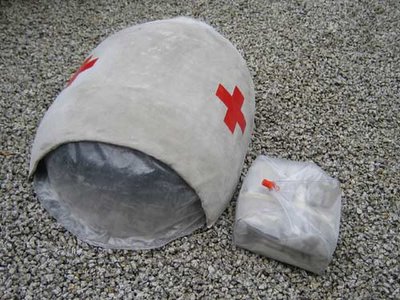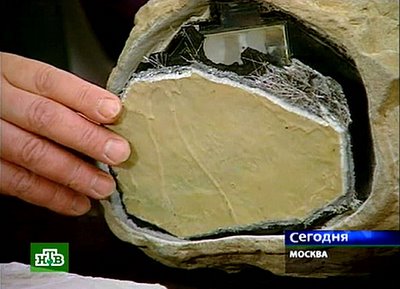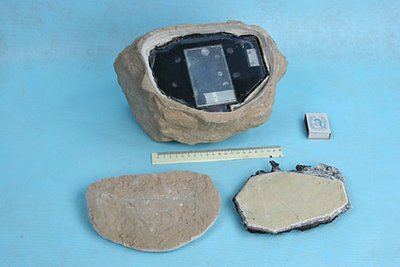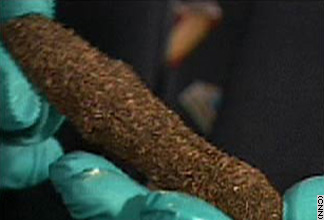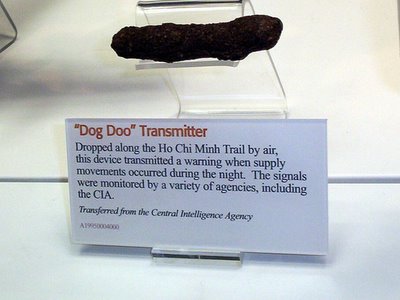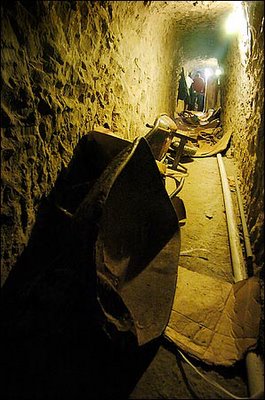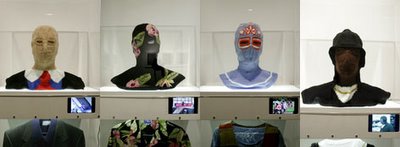
[Image:
source]
A few months ago, I posted a piece, '
improvising sub_Base landscapes' to
Archinect, on secret tunnels cropping up around different border regions around the world, with a particularly fascinating link to a story of a group of Iraqi insurgents, detained at Camp Bucca, who had managed to excavate a
357 foot underground escape tunnel with "flashlights built from radio diodes," and walls "sculpted smooth and strong as concrete" with buckets and milk. It took a couple of hundred inmates to move 100 tons of soil in about eight weeks to create a bunker that would eventually erupt into a full scale urban riot lasting 4 days againt the Americans.
I also made mention of the 110-meter tunnel that was recently discovered snaking between British Columbia and Washington State,
the first and rather well-equipped covert passage ever found linking the U.S. and Canada, fabricated inside a Quonset hut in the Aldergrove area of Langley adjacent to the border. The U.S. has since filled its half with concrete, but officials on both sides were baffled by the extent to which the tunnel had managed to succeed in circumnavigating detection.

Well, suffice to say,
The Global Underworld (as informed by
this great article in Mother Jones) of gunrunners, smugglers, traffickers, jail breakers, refugees and border crossers have certainly not stopped tunneling their way into the unknown passages of our subterranean new millennium. In the interview, Moisés Naím refers to his new book
Illicit: How Smugglers, Traffickers, and Copycats Are Hijacking the Global Economy, a groundbreaking piece of research on the rise of illicit economies, and the infrastructure of a globalized "Black Market" piping through continents with anything from "pirated movies to weapons of mass destruction, human organs to endangered species, drugs, slaves, or stolen art." Documenting the incredible systems and organizations which have cemented the structures of a worldwide subversive economy, Naím projects that such an illicit market accounts for about 10% of the total global GDP and is expected to grow considerably as we move through the century.

[Image:
Tunnel Found Under U.S.-Mexico Border, CBS 2 Video, 01.20.06]
Anyway, in this context
border or
escape tunnels are merely the fledgling apendages of a leviathan bunker system much too great to imagine connecting together inside a hollowed earth. But, I suppose a networked sub_Base landscape serving the entire black market one day could only partially breath through perhaps something resembling one of Geoff's
wormhole speculations, a knotted geologic void pulsating with illicit activity like some earthen intenstinal giardia, destined to expel its gasses at the surface at some point or another. So far, 2006 has already found a few tunnelers doing their part to explore this vast potential that is further pushed below the surface by rises in tighter border security and heavy militarized landscape urbanism.
2 if not
3 more tunnels near San Diego and Nogales have been found in recent weeks partially widdled along the U.S./Mexico border. These are truly improvised tunnels approximately 3 feet wide that began below someone's driveway and nearly ended up in an undisclosed patch of unrelenting desert dirt.
And the
New York Times just came out with a good historical piece on the dozens of smuggler tunnels that have stretched between Gaza and Egypt in the last quarter century, which have opened up a gunrunners' paradise and tunnel excavation building boom, creating an undeniably risky but lucrative business for teams of Palestinian construction workers and refugee entrepreneurs. The article mentions that the tunnels have actually become less used since Israel's pull out of Gaza, since initially there was a massive influx which saturated the underground market, and which would probably pick up again only if violence occurs. To me, it is interesting to guage the increased visibility of these tunnels as Hamas makes its political move from the underground to a greater institutional position on the surface of Palestinian society.

[Image: Illustration of the Rafah Weapon Smuggling Tunnels,
KRT/IDF, 2004]
One of the newest tunnels at the
Erez crossing was discovered about a month ago, and officials on both sides of the fence have continued searching for another near the
Karni crossing, purportedly used for explosives smuggling. The IDF webite has a pretty
comprehensive chronology of news stories exposing the tunnels in Gaza.
In case you were itching for another underground jail break dug out with a bunch of bare hands, well, 3 prisoners in
a jail in Bihar (India) managed to
dig their way out (or, as this article probes, perhaps they had help from contractors who were working on the inside). Apparently, one of the inmates had already escaped this way once in the past, now making a complete mockery of the prison officials there.
So, as global surveillance becomes more pervasive enabled by open markets and advances in satellite technology, and with alarming mass exoduses of immigration pounding the newly fortified borders of the 1st world -- in some sort of epic labor backlash to the hypocrisies of a globalized world economy (where borders are dissolved for the flow of capital) -- will we see a greater underground network of secret tunnels and escape routes develop? Improvised border crossings and insurgency bunkers, an illicit infrastructure of underworld populations burrowing down deep below the radar? Is the urbanism of the next century a subtopian network of illicit colonizers and underground settlements able to slip past the God-eye of rampant global panopticonism, and hijack the world economy?







